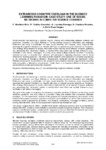
Please use this identifier to cite or link to this item:
http://ricaxcan.uaz.edu.mx/jspui/handle/20.500.11845/1035Full metadata record
| DC Field | Value | Language |
|---|---|---|
| dc.contributor | 31249 | es_ES |
| dc.contributor.other | https://orcid.org/0000-0002-7337-8974 | - |
| dc.contributor.other | https://orcid.org/0000-0002-9498-6602 | - |
| dc.contributor.other | 0000-0002-9498-6602 | - |
| dc.coverage.spatial | Global | es_ES |
| dc.creator | Martínez Ruíz, Francisco Javier | - |
| dc.creator | Godina Gonzalez | - |
| dc.creator | Borrego Elías, Ana Lourdes | - |
| dc.creator | Gamboa Rosales, Hamurabi | - |
| dc.creator | De la Rosa Vargas, José Ismael | - |
| dc.date.accessioned | 2019-05-29T17:39:57Z | - |
| dc.date.available | 2019-05-29T17:39:57Z | - |
| dc.date.issued | 2016-11-16 | - |
| dc.identifier | info:eu-repo/semantics/publishedVersion | es_ES |
| dc.identifier.isbn | 978-84-617-5895-1 | es_ES |
| dc.identifier.uri | http://ricaxcan.uaz.edu.mx/jspui/handle/20.500.11845/1035 | - |
| dc.identifier.uri | https://doi.org/10.48779/2q0t-sd29 | - |
| dc.description.abstract | Social networks are becoming a standard way for sharing and collaborating between students and professors. Currently, our Class Website is not the primary source of information and materials. Professors are using a combination of these social networks. For instance, some classical LMS (Learning Management Systems) as Moodle with ludic or general purpose networks as Facebook. This strategy allows learners to access information in their favorite social network. However, gathering and processing this information implies a mental effort since there are multiple distractors (e.g., notifications and friends’ messages). A survey study asked college students, enrolled in computer sciences courses, to describe their behavior and perceptions regarding classroom use of social networks for learning purposes. The study included students of the program of Computer Engineering at the University of Zacatecas (Mexico). Respondents confirmed partially the hypothesis: Class Websites immersed in social networks (no academic ones) implied a heavier cognitive load. Learning tasks completion is affected in consequence. Finally, there is no important difference between using social networks inside and outside the classroom. | es_ES |
| dc.language.iso | eng | es_ES |
| dc.publisher | International Academy of Technology, Education and Development (IATED) | es_ES |
| dc.relation.uri | generalPublic | es_ES |
| dc.rights | Atribución-NoComercial-CompartirIgual 3.0 Estados Unidos de América | * |
| dc.rights.uri | http://creativecommons.org/licenses/by-nc-sa/3.0/us/ | * |
| dc.source | International Conference of Education, Research and Innovation, Proceedings of ICERI2016 Conference noviembre 14-16 2016, Sevilla, España | es_ES |
| dc.subject.classification | INGENIERIA Y TECNOLOGIA [7] | es_ES |
| dc.subject.other | Blended learning | es_ES |
| dc.subject.other | web 2.0 | es_ES |
| dc.subject.other | Social Networking | es_ES |
| dc.subject.other | cognitive overload | es_ES |
| dc.subject.other | usability | es_ES |
| dc.title | Extraneous cognitive overload in the blended learning paradigm. Case study: Use of social networks in computer science courses | es_ES |
| dc.type | info:eu-repo/semantics/conferenceObject | es_ES |
| Appears in Collections: | *Documentos Académicos*-- UA Ingeniería Eléctrica | |
Files in This Item:
| File | Description | Size | Format | |
|---|---|---|---|---|
| Paper7_EXTRANEOUSCOGNITIVEOVERLOADINTHEBLENDED.pdf | 175,91 kB | Adobe PDF |  View/Open |
This item is licensed under a Creative Commons License
